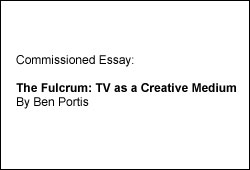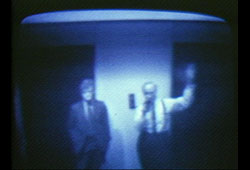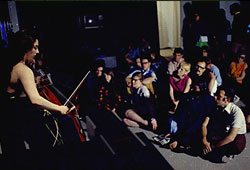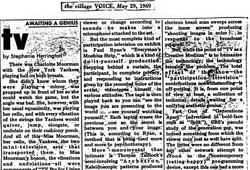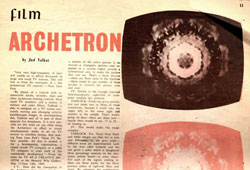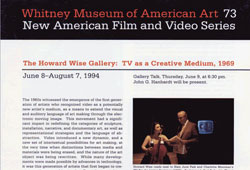A Kinetic History: The EAI Archives Online
A Kinetic History: The EAI Archives Online
TV as a Creative Medium
In May 1969, "TV as a Creative Medium" opened at the Howard Wise Gallery in New York. This seminal exhibition heralded a burgeoning development that came to be known as "video art." The first exhibition in the United States devoted to video, "TV as a Creative Medium" signaled radical changes, inspiring a generation of artists to take up video and provoking commentary that extended well beyond the channels of art discourse. Among the twelve artists in the show were Nam June Paik, Charlotte Moorman, Paul Ryan, Ira Schneider, Frank Gillette, and Eric Siegel. Prescient in its diversity, the exhibition featured performance, objects, closed-circuit tapes and installations, with works as varied as Paik and Moorman's TV Bra for Living Sculpture, Gillette and Schneider's Wipe Cycle and Thomas Tadlock's Archetron. As with other revolutionary exhibitions, "TV as a Creative Medium" was both the grand finale of an idea of the kinetic art movement of the 1960s and an indication of the future — the impact of video and television in the hands of artists.
